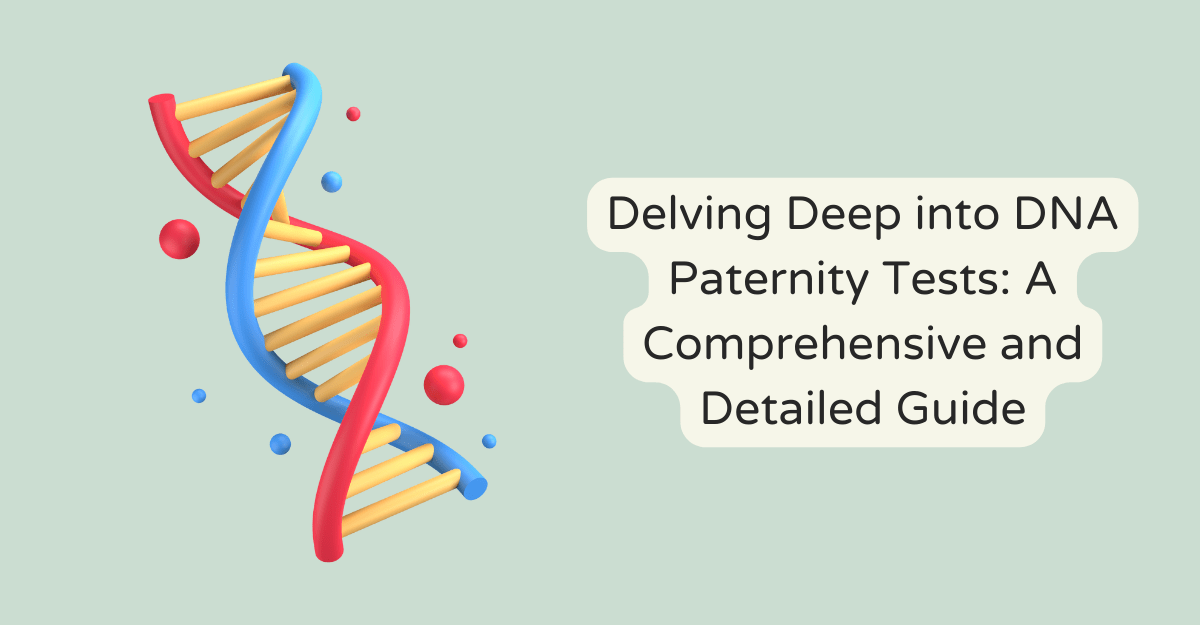
The complex and intricate realm of DNA and genetics is undoubtedly a fascinating field, yet it can also be rather overwhelming and daunting for the uninitiated. However, in terms of determining and verifying biological relationships, especially those concerning paternity, the underpinning science of a DNA paternity test can provide nothing less than an absolute degree of certainty.
This informative piece aims to delve into the very core of DNA paternity tests, thoroughly exploring their crucial importance, the process involved in conducting these tests, as well as the various circumstances where they become a key necessity.
An Introduction to DNA Paternity Tests
Explaining in its most rudimentary terms, a DNA paternity test is a precise scientific procedure employed to definitively confirm or refute whether a man is the biological father of a particular child. This specific type of DNA tests involves a detailed analysis of designated regions of a person’s unique DNA, which are subsequently compared to the corresponding areas present in the DNA of the alleged father in consideration.
The Underlying Purpose of DNA Paternity Tests
The reasons that may prompt an individual to opt for a DNA paternity test can be diverse and numerous. For some, it can be ignited by a simple curiosity or eagerness to delve into the depths of their genealogical roots and family history. Others, however, are often legally compelled to undertake such tests due to compelling issues related to child custody, support, family-based immigration, inheritance matters, and even in adoption processes. Regardless of what motivates the need, paternity tests serve as an unfailing and indisputable instrument to establish biological relationships and lineages.
The Significance and Impact of DNA Paternity Tests
The results of a DNA paternity test bear an unmistakable significance and transformational weight. The ascertainment or denial of paternity, based on these tests, can be the pivotal turning point in legal disputes around crucial issues such as child custody and child support. Furthermore, healthcare practitioners and medical professionals may leverage these test results to accurately pinpoint a patient’s inherent propensity or predisposition to acquire certain inheritable diseases, thereby enabling them to tailor and personalise effective treatment strategies.
The Process of Conducting DNA Paternity Tests
Fortunately, owing to remarkable advancements in modern technology, the process of executing DNA testing has become a straightforward, simplified, and non-invasive procedure. The most commonly utilised method involves the collection of cells from the cheeks or inner lining of the mouth of all the test participants via a cotton swab. This is done painlessly, thus making it suitable for clients of all ages.
Following the collection of samples, the DNA specimens of both the child and the alleged father are meticulously compared for identical DNA traits. The outcome of this comparison forms the basis concluding the nature of the biological relationship being investigated.
Interpreting the Outcomes of DNA Paternity Test Results
The results of DNA paternity tests are generally quite direct and straightforward in their implications. The conclusion predominantly indicates the statistical probability of paternity, which typically stands above 99% if the tested individual is observed to be the true biological father.
Categories of DNA Paternity Tests
Within the broad sphere of DNA paternity tests, there exist two fundamental types of tests namely, legal and home paternity tests. Both incorporate similar methodologies and can yield equivalently high levels of accuracy. Despite this similarity, the distinguishing factor between the two primarily lies in the motive or intention driving the test. Legal tests are characteristically suitable to be used as valid evidence in court proceedings and often imply a thorough chain of custody procedure.
Circumstances Where DNA Paternity Tests Become Essential
There lie diverse circumstances and scenarios where a DNA paternity test may emerge as indispensable. Legally speaking, such tests play a decisive role in settling issues related to child support and custody, resolving dilemmas in immigration cases, or elucidating genealogical lineage for purposes related to inheritance. Moreover, a paternity test can be of paramount importance in confirming the identity of an individual in cases brimming with ambiguity or uncertainty.
The Emotional Relevance of Paternity Testing
From an emotional perspective, certain individuals may choose to undertake a DNA paternity test to gain peace of mind and personal reassurance of the biological bonds and connections they share with their offspring. In such scenarios, the final results of the test serve the purpose of strengthening familial ties, eradicating uncertainties, eliminating doubts and fostering deeper and stronger relationships and kinships.
Conclusion
In conclusion, DNA paternity tests play a vital and instrumental role in establishing and verifying biological relationships, notably those linking a father and child. They extend a clear and unambiguous lifeline in complex situations that involve contentious custody battles or inherited lineage disputes. They provide crucial information that has profound implications in the field of healthcare and medical treatments and help millions of people globally in exploring their genealogical roots with unmatched precision.
DNA paternity tests, whether for the fulfillment of legal obligations, addressing health concerns, or satisfying personal curiosities, have indeed become an indispensable tool in today’s ever-evolving society. They stand as the beacon of certainty, providing unequivocal answers to profound and intricate questions about our genetic and biological origins.